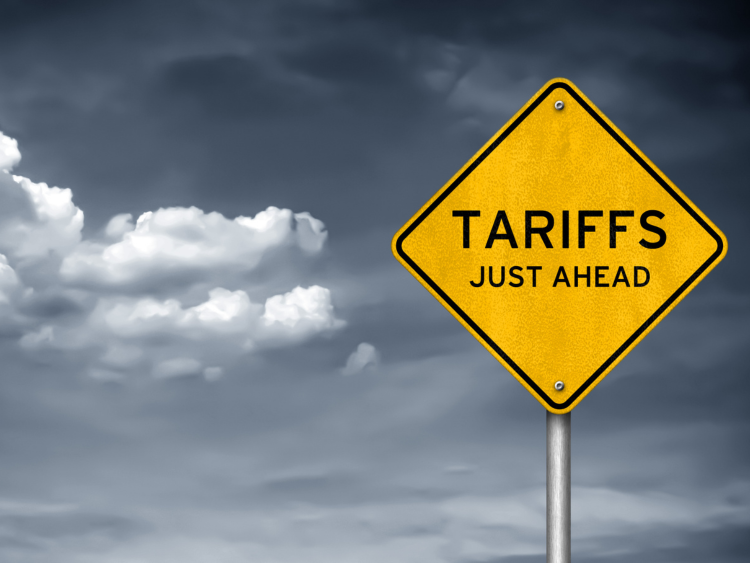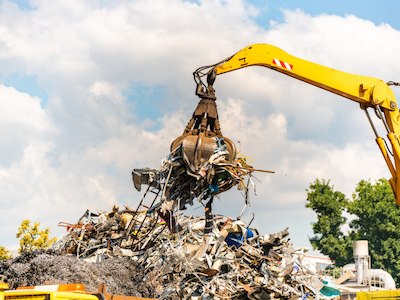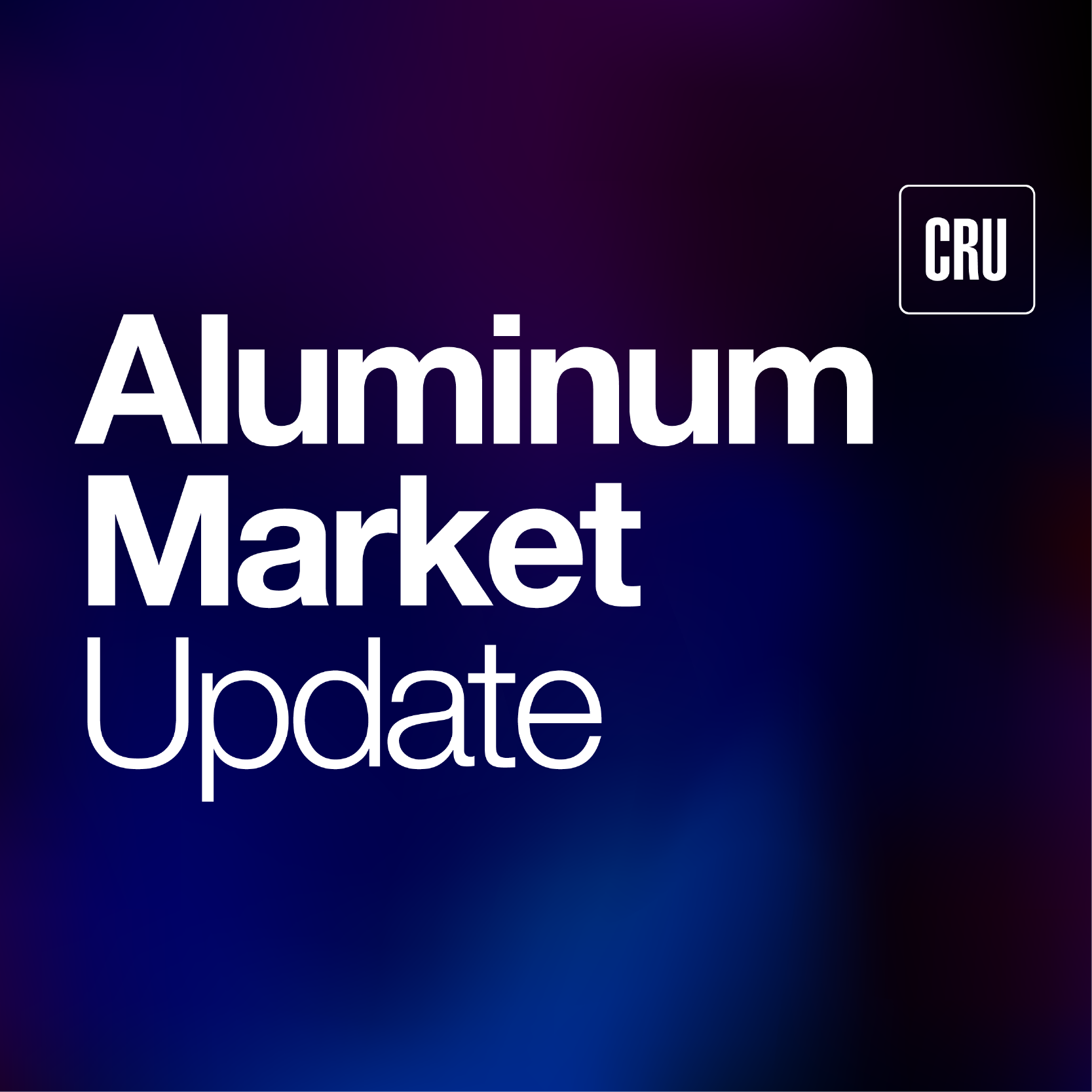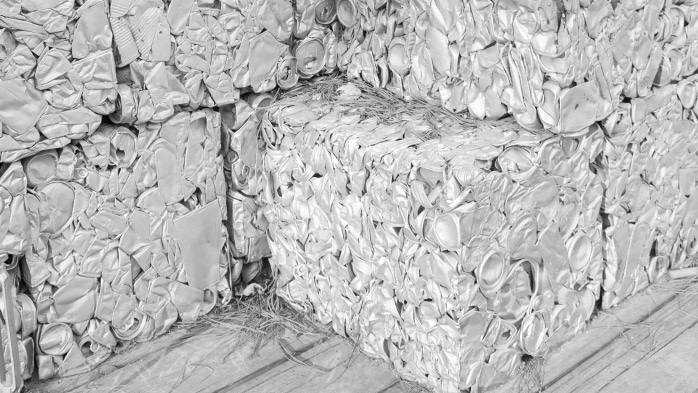Aluminum Scrap Markets

February 7, 2025
AMU Week in Review: Tariff delays, premium swings, and global supply chain risk
Written by Gabriella Vagnini
This first week of February 2025 saw tariffs dominate the aluminum market conversation, with Trump imposing 25% tariffs on Canadian and Mexican imports, then delaying their implementation for 30 days after negotiations with both governments. China wasn’t so lucky, as the U.S. followed through with a 10% tariff on Chinese goods, prompting immediate retaliatory tariffs from Beijing on U.S. coal, LNG, crude oil, and agricultural machinery.
The Midwest Premium (MWP) initially surged on tariff news, jumping 3¢ to 28.25¢/lb, but cooled slightly after the 30-day tariff delay, now range-bound between 28¢ and 28.5¢/lb. Futures pricing has flattened out for April–December at 27¢/lb, showing uncertainty but no major retreat.
Meanwhile, Europe and Asia are showing signs of weaker demand, with European ingot premiums slipping further and Japanese and South Korean spot premiums dropping sharply. Scrap supply remains tight post-Lunar New Year, and the secondary aluminum market is still finding its footing.
Here’s the full breakdown of the week’s biggest market movers and what the U.S. aluminum market needs to watch next:
Tariffs, trade policy and global market shifts
✅ Mexico’s 25% tariff implementation delayed for 30 days – Trump agreed to a one-month delay on the tariffs after Mexico committed to deploying 10,000 National Guard troops to help curb fentanyl and migration. For now, Mexican aluminum imports continue without added costs, but this is temporary. If Mexico doesn’t meet Trump’s demands, the 25% tariff could still go into effect next month.
✅ Canadian aluminum still facing 25% tariff after March 1 – Though the delay buys time for negotiations. The U.S.-Canada Critical Minerals Alliance talks could lead to a deal.
✅ Midwest premium holds at 28.25¢/lb after tariff surge – The MWP spiked 3¢ on tariff news but stabilized after the 30-day pause. April–December futures remain flat at 27¢/lb, meaning buyers should brace for another potential premium jump in March if tariffs go forward.
❌ China hit with 10% tariff, retaliates immediately – Beijing responded to Trump’s tariffs by imposing 15% tariffs on U.S. coal and LNG, plus 10% on crude oil, farm machinery, and pickup trucks. Tungsten as well, This raises energy costs for aluminum producers, meaning higher downstream costs for U.S. buyers.
❌ European ingot premiums drop amid weak demand – With Europe’s auto and construction sectors still slow, aluminum premiums fell another $5–$10/mt in Germany and Rotterdam. If Canadian metal gets diverted to Europe due to U.S. tariffs, it could flood an already oversupplied market, pushing European premiums even lower.
⚠️ New push to get U.S Trade Representatives (USTR) more involved in tariff decisions – Lawmakers want the USTR to have a say in Trump’s tariff moves, since trade decisions are being made without USTR input. If this gains traction, we could see more structured policy, maybe even exemptions for key industries like aluminum.
⚠️ Japan & South Korea spot premiums plunge – Premiums in Japan fell to $195-$230/mt, and South Korea’s market dropped to $170-$180/mt as demand weakens and supply rises. This signals soft global demand for primary aluminum, which could limit further price increases in the U.S.
Recycling, secondary aluminum & market developments
✅ Crown holdings reported strong demand for aluminum packaging – In a report from CRU’s Market Alert, they showed Crown’s global beverage can shipments rose 5%, confirming steady demand for aluminum packaging.
✅ Waste Management (WM) sees recycling profits doubling by 2026 – In an article written by AMU’s Greg Wittbecker, WM expects recycling EBITDA to surge from $53M in 2024 to $120M+ in 2025 and $250M+ in 2026. Stating that although aluminum only represents 3% of the total material generation, it represents about 50% of the revenue stream. This reinforces aluminum’s dominance in single-stream recycling, keeping UBC demand strong despite primary aluminum market volatility.
✅ HPQ Silicon patents process to turn black aluminum dross into green hydrogen – A waste-to-energy process could convert aluminum dross into hydrogen fuel, cutting landfill waste and creating a new revenue stream for recyclers. It states that if this scales up, it could improve scrap processing economics, which is critical as tariffs drive scrap pricing volatility.
⚠️ Tighter aluminum scrap supply and slow secondary market recovery in China – Chinese scrap supply remains tight, and secondary aluminum demand is sluggish post-holiday. If this trend holds, U.S. scrap exporters could see stronger demand from overseas, raising domestic scrap prices.
What to watch in the coming weeks
🔎 Novelis has its earnings call on Monday, Feb. 10 – AMU will update you on their earnings as well as any new or updated developments, especially pertaining to their Bay Minette low-carbon recycling and rolling plant. As we have heard they may be delaying it a few years past their 2026 scheduled completion date. The plant was originally scheduled for completion early 2025 but was extended in February 2024 to the end of 2026. The groundbreaking took place in 2022.
🔎 Analysts’ bullish outlook for 2025 – Analysts predict that aluminum will be the top performing base metal in 2025, with an expected price increase of 6.3%. Driven by anticipated supply shortfalls and structural constraints, particularly China’s smelter capacity. We’ve also heard the same bullish drive from a major U.S. producer during conversations had at last week’s conference in Fort Lauderdale.
🔎 Shift from punitive to reciprocal tariffs – Unlike past tariffs on Canada, Mexico, and China, which were imposed from economic and political leverage, Trump’s reciprocal tariff plan (as first seen in Reuters) aims to match foreign countries’ duties on U.S. exports. If aluminum is included, this would reshape trade dynamics, impacting costs, supply chains and potential retaliatory actions in the coming weeks.
🔎China’s next move will be key – If Trump and Xi negotiate a trade de-escalation, this could cool down energy costs and aluminum pricing, but if China retaliates further, expect more market disruption. As of this week, no call has taken place between President Trump and President Xi Jinping.
🔎 Watch for retaliation from Canada & Mexico – Canada has already imposed counter-tariffs on U.S. goods, and Mexico is considering similar measures. If aluminum-related goods get targeted, U.S. manufacturers could face even more cost pressures. And even though the MWP stabilized, next month’s Canada-Mexico tariff talks could shake things up again if no trade deal is reached, expect another price spike.
🔎 Global aluminum demand still weak – Soft demand in Europe and Asia is keeping global premiums low, which could limit further price gains in the U.S.
🔎 LME aluminum rebounds amid trade speculations and potential leadership shifts – LME aluminum bounced back to $2,633/mt from a dip to $2,592/mt on Thursday, supported by expectations of Trump’s upcoming trade announcement. If tensions ease, tariff-driven price spikes could stabilize, helping downstream buyers lock in more stable costs. Also, keep an eye on potential leadership changes at the LME, as reports suggest a top executive may step down soon, a shift that could introduce additional market uncertainty.
Economic reports to watch for next week:
| Consumer price index | Wednesday, Feb. 12 | 8:30am Eastern |
| Producer price index | Thursday, Feb. 13 | 8:30am Eastern |
| Import price index | Friday, Feb. 14 | 8:30am Eastern |
| Industrial production | Friday, Feb. 14 | 9:15am Eastern |
| Business inventories | Friday, Feb. 14 | 10am Eastern |







